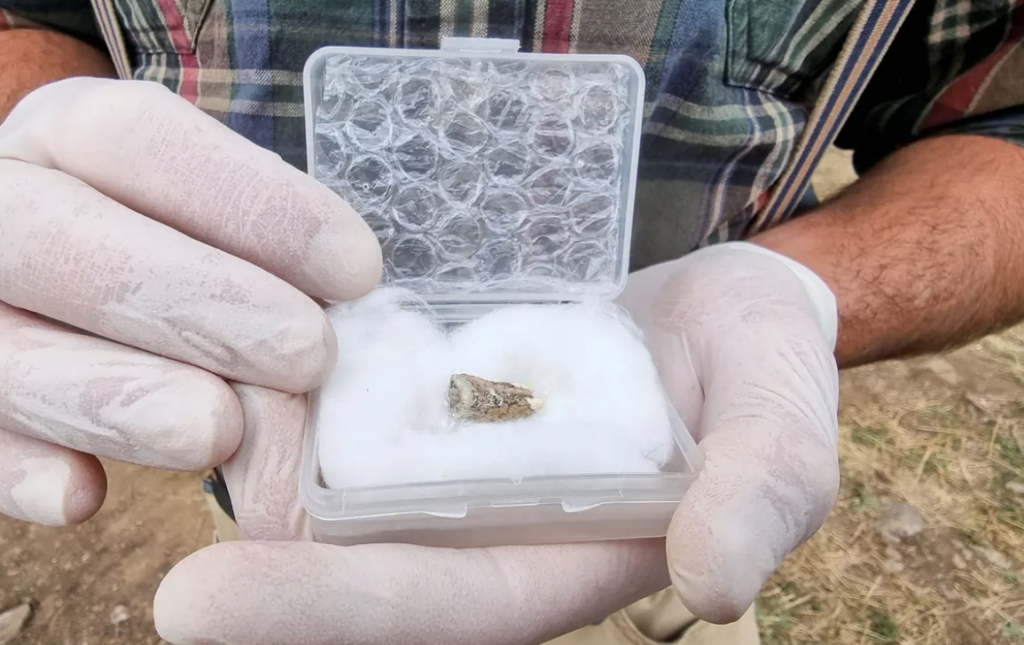The field of Bioarcheology involves the study of skeletal remains of humans, specifically those found at archaeological sites. The study of these remains gives unparalleled insight into the many facets of ancient civilization, especially in relation to diet and environment. One of the most important subfields of Bioarcheology is dental anthropology (Hillson 2014). The study of one’s teeth is among the best ways of extracting information regarding both the individual who the tooth belongs to, as well as that individual’s environment and culture.
Due to tooth enamel being the hardest tissue in the body, being 96% dense inorganic hydroxyapatite, it tends to preserve very well regardless of environmental factors (ADA 2022). In fact, a 1.8-million-year-old human tooth was found in 2022 in the nation of Georgia (Reed 2022).

Through a multitude of tests that can be run on the tooth, like carbon dating, archaeologists can put together a somewhat detailed picture of what that individual’s life was like. From lab tests using carbon and nitrogen isotopes in the enamel, scientists can understand and reconstruct diet and where food sources were originally from (Mayne 2015). This could be pivotal in establishing whether one was a part of a nomadic hunter gathering society or if they relied on agriculture for sustenance. Other testing can even give insight into the last 20 years of that individual’s life, which can be pivotal in tracking the progression of a person’s life. This is something that is otherwise incredibly difficult to learn from any other finds at a site (Mayne 2015). Scientists can also extract the exact age of the individual when they died using isotopic dating (Mayne 2015).

Other than using chemical testing, information can also be extracted purely through observation of the tooth. People of Hunter Gatherer societies typically had overbites, causing a specific grinding of the tooth to become common (ADA 2022). People of agriculture-based societies typically show increased pitting, small holes on the front of the tooth, due to the more common reliance on wheat and other carbs (ADA 2022). This also will lead to the increased development of cavities (ADA 2022).
Without the analyzation of teeth, scientists’ understanding of ancient people would be far more limited. They provide unparalleled insight into the past, giving data that not only leads to explanations of the person who the tooth belonged to, but also of that person’s environment and culture.
-Joseph Howard
Extra reading :
https://scholarworks.calstate.edu/downloads/mg74qm70w
https://intarch.ac.uk/journal/issue36/hollund_index.html
References:
AAFS. “Teeth within Anthropology.” All Things AAFS. 2015. https://allthingsaafs.com/tag/teeth-within-anthropology/
Hillson, Simon. Tooth Development in Human Evolution and Bioarchaeology. Cambridge: Cambridge University Press, 2014. doi:10.1017/CBO9780511894916h
How Stuff Works. Bioarcheology. 2015. https://science.howstuffworks.com/environmental/earth/archaeology/bioarchaeology.html
Reed, Besty. “1.8m-year-old tooth of early human found on dig in Georgia.” The Guardian, September 9, 2022. https://www.theguardian.com/science/2022/sep/09/1-point-8-million-year-old-tooth-of-early-human-found-on-dig-in-georgia.
“Picture of the Teeth.” Sherwood Park Dental, No Date. https://sherwoodparkdental.ca/picture-of-the-teeth/.

How is inorganic hydroxyapatite helpful in preservation, and why was “a multitude of tests”, instead of a selected few, applied to examining this one tooth?